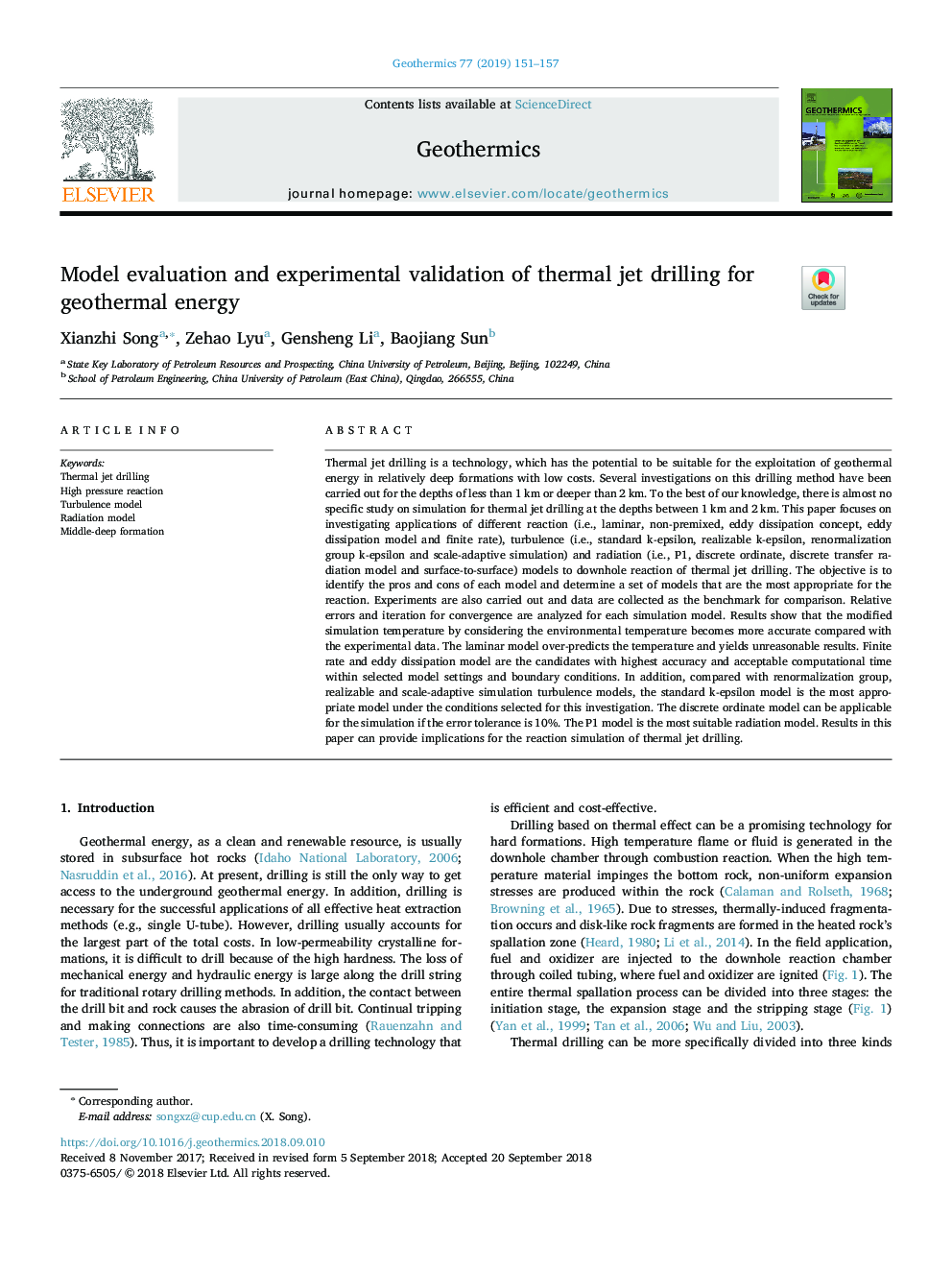| کد مقاله | کد نشریه | سال انتشار | مقاله انگلیسی | نسخه تمام متن |
|---|---|---|---|---|
| 11032119 | 1645683 | 2019 | 7 صفحه PDF | دانلود رایگان |
عنوان انگلیسی مقاله ISI
Model evaluation and experimental validation of thermal jet drilling for geothermal energy
ترجمه فارسی عنوان
ارزیابی مدل و اعتبار سنجی عملیات حفاری جت حرارتی برای انرژی زمین گرمایی
دانلود مقاله + سفارش ترجمه
دانلود مقاله ISI انگلیسی
رایگان برای ایرانیان
کلمات کلیدی
حفاری جت حرارتی، واکنش فشار بالا، مدل آشفتگی مدل تابش، تشکیل میانی عمیق،
موضوعات مرتبط
مهندسی و علوم پایه
علوم زمین و سیارات
ژئوشیمی و پترولوژی
چکیده انگلیسی
Thermal jet drilling is a technology, which has the potential to be suitable for the exploitation of geothermal energy in relatively deep formations with low costs. Several investigations on this drilling method have been carried out for the depths of less than 1âkm or deeper than 2âkm. To the best of our knowledge, there is almost no specific study on simulation for thermal jet drilling at the depths between 1âkm and 2âkm. This paper focuses on investigating applications of different reaction (i.e., laminar, non-premixed, eddy dissipation concept, eddy dissipation model and finite rate), turbulence (i.e., standard k-epsilon, realizable k-epsilon, renormalization group k-epsilon and scale-adaptive simulation) and radiation (i.e., P1, discrete ordinate, discrete transfer radiation model and surface-to-surface) models to downhole reaction of thermal jet drilling. The objective is to identify the pros and cons of each model and determine a set of models that are the most appropriate for the reaction. Experiments are also carried out and data are collected as the benchmark for comparison. Relative errors and iteration for convergence are analyzed for each simulation model. Results show that the modified simulation temperature by considering the environmental temperature becomes more accurate compared with the experimental data. The laminar model over-predicts the temperature and yields unreasonable results. Finite rate and eddy dissipation model are the candidates with highest accuracy and acceptable computational time within selected model settings and boundary conditions. In addition, compared with renormalization group, realizable and scale-adaptive simulation turbulence models, the standard k-epsilon model is the most appropriate model under the conditions selected for this investigation. The discrete ordinate model can be applicable for the simulation if the error tolerance is 10%. The P1 model is the most suitable radiation model. Results in this paper can provide implications for the reaction simulation of thermal jet drilling.
ناشر
Database: Elsevier - ScienceDirect (ساینس دایرکت)
Journal: Geothermics - Volume 77, January 2019, Pages 151-157
Journal: Geothermics - Volume 77, January 2019, Pages 151-157
نویسندگان
Xianzhi Song, Zehao Lyu, Gensheng Li, Baojiang Sun,
